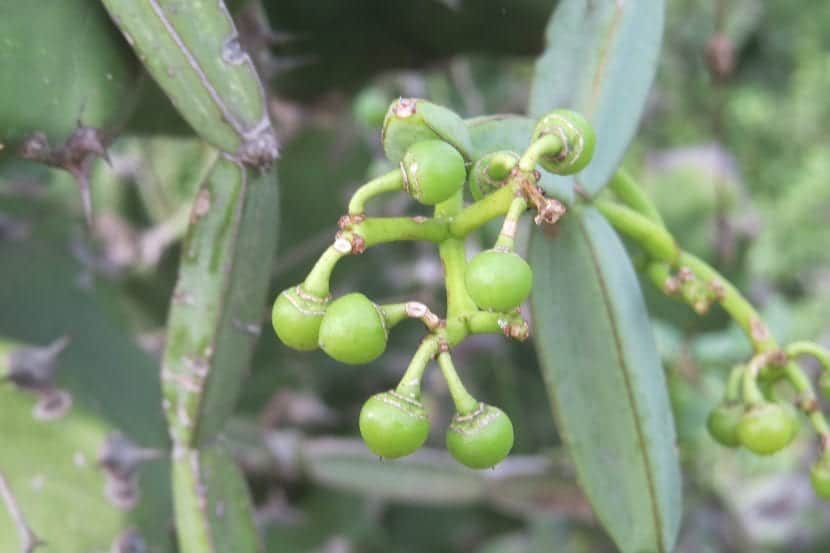
Image - Wikimedia / Vinayaraj
Do you like hanging plants? There are some that can also be used as crawlers, such as the Cissus quadrangularis. This is a very curious species, with stems that are not cylindrical but quadrangular, which is where the surname comes from.
Although it produces flowers, they are tiny and do not have great ornamental value. But if we talk about its uses ... these may interest you.
Origin and characteristics

Image - Wikimedia / Mokkie
It is a perennial species with highly branched stems native to India or Sri Lanka (not yet clear), but it also grows wild in Africa, Arabia, Thailand, Java and the Philippines. It can reach a height (or length, depending on where it is located) of 1,5 meters, with highly branched quadrangular stems 12 to 15mm wide.
The leaves appear in the nodes of the shoots, and are trilobed, heart-shaped, with a size of 2-4 cm in width. The tendrils come out of them, which are used by the plant to climb. The flowers, which are grouped in clusters, are small, white, yellowish or greenish. And the fruit is a globose berry, red when ripe.
Uses
- Ornamental: it is very interesting to grow in hanging pots, as well as to put near structures for climbing plants, such as lattices, stakes, etc.
- Medicinal- Used to treat asthma, cough, osteoporosis, and externally hemorrhoids and gonococcus. In addition, in modern medicine it is used to improve bone health and as a slimming agent.
What are their cares?

Image - Flickr / lalithamba
If you want to have a copy of Cissus quadrangularis, we recommend you take care of it as follows:
- Location: it must be outside, in full sun, or in semi-shade (as long as it gives it more light than shade).
- Earth:
- Pot: you can use universal growing medium mixed with perlite in equal parts.
- Garden: the soil must be fertile, with good drainage.
- Irrigation: water about 3 times a week in summer, and a little less the rest of the year.
- Multiplication: the easiest way is by stem cuttings in spring. Cut some, let the wound dry for 3-4 days, and then plant them in pots.
It can also be by seeds, in spring-summer. - Rusticity: it resists weak frosts, down to -2ºC and only if they are punctual and of short duration. If you live in an area where the temperature drops more, you should protect it in a bright room and away from drafts.
What did you think of this plant?
I know cissus because I give my dog for osteoarthritis and he is doing great, he has no pain or anything.
Mascosana's cissus was found by a girl who was talking about it. I didn't even know about this plant.